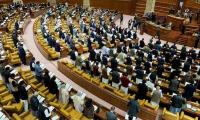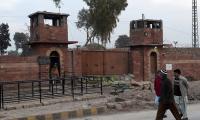The whole debate on whether Pakistan should have a lockdown or not revolved around the lack of the government’s willingness to offer social protection to the poor after the one-time payments linked to Covid-19 made under the Ehsaas programme. This was when there was a partial lockdown.
The government does not want to offer further social protection to the poor, and therefore it is opposed to the lockdown idea and wants the poor to fend for themselves despite the pandemic. We considered it worthwhile to revisit the ideas of poverty reduction and social protection with the help of some international literature (Hanna, Policy Brief, International Growth Centre-IGC, 2020; Bandiera et al, IGC, 2019; Page and Pande, 2018) on this topic.
There are three strong strands in the new literature on social protection. One, we have to move beyond money transfers graduating out of the mere consumption support provided now in many parts of the developing world and expand the scope of social protection. Two, the role of governments is crucial in poverty reduction and governments should not be bypassed by the international aid forums.
And three, mere economic growth is not likely to further reduce poverty unless it is accompanied by activating the role of governments (preferably democratic) who are accountable and where the poor are empowered enough to demand physical infrastructure, ‘social and human systems’ and institutions that reduce poverty.
Hanna defines social protection covering “a wide variety of programmes falling under three broad categories: social safety nets for the very poor, social insurance, and active labour market policy. Safety nets could include programmes such as in-kind or cash transfer programmes (such as BISP and Ehsaas programme). Social insurance includes pensions, health insurance, and unemployment insurance. Active labour market policy may include minimum wage programmes, wage subsidy programmes, or skills training to transition workers from non-productive to growing industries.”
At the heart of it is the economics idea that market failures prevent the poor from achieving their full productive roles and generate poverty traps. If the poor can have the economic opportunities, they will have more productive jobs and it will transform poverty by achieving social mobility. Therefore, large one-off transfers to the poor can improve their productivity by offering “production support” and might be better than consumption support.
Agricultural insurance to farmers could help them adopt more productive technology. Unemployment and health insurance could offer the poor ways to work away from home in more productive jobs. Such opportunities could be more high-earning and productive and made possible by unemployment insurance to protect against the risks of the labour market.
Social protection is even more important than before in these times of Covid and in the post-pandemic phase. According to World Bank estimates, there is a potential of about 40-60 million people being pushed into extreme poverty worldwide due to the crisis of Covid-19. It will erase decades of work to reduce poverty in the world. Even 75 percent of fragile countries have offered social protection to their citizens to deal with the pandemic. However, even more broad-scale social protection funding is needed along with the measures to secure the food supply system to prevent humanitarian disasters.
Since the majority of the workers in developing countries like Pakistan work in the informal sector, it makes the assessment and outreach of social distancing measures difficult as Ehsaas programme was seen struggling with targeting. Moreover, the new vulnerable may be different from the remote and rural settings of traditional poor as Covid-19 has had a disproportionate impact on urban areas.
Given the population density, higher exposure and lockdown measures, the majority of the new poor may belong to urban areas who are unlikely to be under the existing social assistance radar. Therefore, there is a need for high priority to be assigned to urban poor and working class in the pandemic and post-pandemic phase.
Social assistance programmes are generally targeted through proxy-means testing (PMT), however, it is infrequently conducted as BISP carried out its exercise about 10 years ago. PMT is not suitable to identify the recipients to cater to quick income shock as it comes in the midst of Covid-19. It is important to cover the exclusion errors. Universal systems for short-run duration or universal coverage within the geographically targeted areas might be more desirable.
Other flexible systems include community-targeting, application of administrative data sets such as electricity or phone records, and on-demand systems. The downside of community targeting is that it can often lead to elite capture. Anyway, developing countries need to think out of box to target the poor and vulnerable in the wake of this pandemic.
Pakistan is one of those eight middle-income countries that each have one percent or more of the poor of the world and so they are called “high-poverty middle-income countries”. It is clear that poverty will not be reduced through economic growth alone and Pakistan’s economic growth is in anyway projected to go into the negative due to the impact of the pandemic amongst other underlying factors.
The question is that, when Pakistan even struggles to provide consumption-based social assistance to a small percentage of its population, how could it offer social insurance and other large one-time assistance for production support to the poor? Unless the fundamentals of state structure in Pakistan are changed and tax capacity significantly enhanced, it looks to be a difficult task. However, it is important to initiate a debate on expanding the scope of social assistance in developing countries like Pakistan due to the pandemic.
The writer is an Islamabad-based social scientist.
Email: fskcolumns@gmail.com
The post-election situation will be troublesome and worrisome for Modi
Most favourable concept developed so far revolves around public-private partnerships
There is only one way forward: cut non-development expenditures, including non-combat defence expenditure
The plan aims to ensure financial stability, control inflation, and promote economic prosperity
Currently, a staggering 60 per cent of government revenue is being wasted on interest payments
It seems that Beijing’s goodwill, stronger financial stature, principle of non-interference in domestic affairs and...







